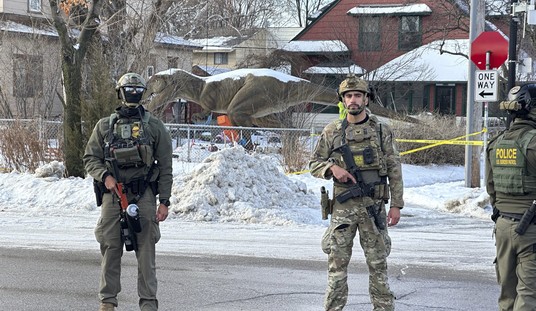They call it a “novel coronavirus” for a reason; it’s brand new. Whether it was created in a lab or not has yet to be proved but whether it’s a naturally occurring phenomenon that’s happened dozens of times in human history — disease transmitted from animals to humans — or not, the fact is we don’t know very much about it.
We’re learning a lot, but there are still several key mysteries that need to be unraveled before we can truly believe ourselves to be safe.
And the biggest may be why do so many people who test positive for the virus don’t show any symptoms or even get sick?
Aboard the aircraft carrier Theodore Roosevelt, the majority of positive cases so far are among crewmen who are showing no symptoms of the disease.
The possibility that the coronavirus spreads in a mostly stealthy mode among a population of largely young, healthy people showing no symptoms could have major implications for U.S. policy-makers, who are considering how and when to reopen the economy.
It also renews questions about the extent to which U.S. testing of just the people suspected of being infected is actually capturing the spread of the virus in the United States and around the world.
Maybe we should be asking just how good these tests are? As many as 1 in 3 nasal swab tests have been a false positive or a false negative. In a pandemic, that’s not very helpful.
Roughly 60 percent of the over 600 sailors who tested positive so far have not shown symptoms of COVID-19, the potentially lethal respiratory disease caused by the coronavirus, the Navy says. The service did not speculate about how many might later develop symptoms or remain asymptomatic.
“With regard to COVID-19, we’re learning that stealth in the form of asymptomatic transmission is this adversary’s secret power,” said Rear Admiral Bruce Gillingham, surgeon general of the Navy.
More importantly, how many asymptomatic sailors will never get sick? China has just released a study showing that most cases that are asymptomatic actually stay that way and the patient never falls ill.
The phenomenon of asymptomatic transmission is a puzzling feature of the virus that’s allowed the pandemic to spread wider and faster than previous outbreaks. While researchers earlier thought that most patients ultimately end up developing symptoms, the indication from China’s data that a sizable group remains symptom-free throughout infection underscores the challenge of containing the widening pandemic.
Is it bad testing? Are some people more or less immune to the effects of the virus? Is there something in the virus itself that needs to be “turned on” in order to sicken its host?
Despite thousands of researchers working night and day to find the answer to these and other questions, it may be months or years before we know enough about the coronavirus to combat it effectively. In the meantime, all we can do is be careful and try to stay out of its way. You would expect that some kind of modified social distancing policy and quarantining sick people would continue until a vaccine is developed or we understand enough to render the virus ineffective.
Until then, getting back to work will be a slow, painful process with many stops and starts as flareup of the virus occur. This is not conducive to creating a roaring economy, but it will be better than what we have now.
Editor’s Note: Want to support PJ Media so we can keep telling the truth about China and the virus they unleashed on the world? Join PJ Media VIP and use the promo code WUHAN to get 25% off VIP membership!










Join the conversation as a VIP Member